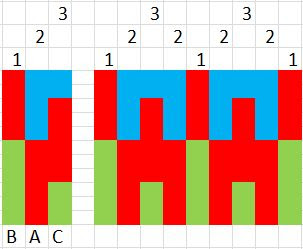When I was a kid snow was a seasonal source of fascination. Described as a blanket, yet cold to the touch. From a distance, uniform, white, featureless. Up close, unique crystals of ice stuck together in delicate hexagonal patterns. Soft to the touch as flakes fell onto an outstretched hand, yet hard and painful when made into a ball and thrown during the many snowball fights of winters past. It was strong enough to build snow statues yet melted away in the sun. Snow was a magical substance that captured my imagination. The idea no two snowflakes could be the same was one of the many wonders that encouraged me to pursue the sciences in a bid to understand the magic around me.
As an adult snow maintains its allure, perhaps because it is rarely seen in the area I now call home, however, the idea of unique snowflakes is no longer a mystery. The development of chaos theory during the second half of the 20th century provided a convenient explanation of how the shape of a snowflake would be dictated by its path through the air and the other crystals it encountered on the way. Whilst the ice crystals that join up to make a snowflake have a limited number of pattens, the number of ways they can combine is astronomical.
An entire blog could be devoted to the wonder that is the physics and chemistry behind the creation of snowflakes, but it's Christmas, so let's just look at some pretty pictures.
Above you can see a macrame snowflake that I've been meaning to make for the last three years. Its time finally came when I'd crocheted my small stash of lurex yarn into a variety of snowflakes using patterns from Caitlin Sainio's wonderful book and had to turn to string as a material. Unlike the crochet snowflakes, the macrame was a free form pattern that I made up on the fly using basic square knots. Next year might see me developing the idea using something a bit more sparkly than kitchen string, but for now here are a couple of the crocheted pieces.
The village art group arranged a lino printing workshop, which was so much more fun than the lino cutting of my youth. Modern "lino" is much softer than the rhino skin material of yesteryear, which made it much easier to produce the snowflake linocut (on the left). On the right is a print taken from the lino.
The final examples are a bit of freeform embroidery, which became a festive coaster, and an image from a snowflake generator that turned up during an idle internet search. You can try it for yourself here.
It seems that while natural snowflakes are unique, those created by me have a definite pattern to them, but they were all fun to make, as were the snowflake biscuits, which didn't last long enough to be photographed.
What were your festive makes? I'd love to see them.






















































